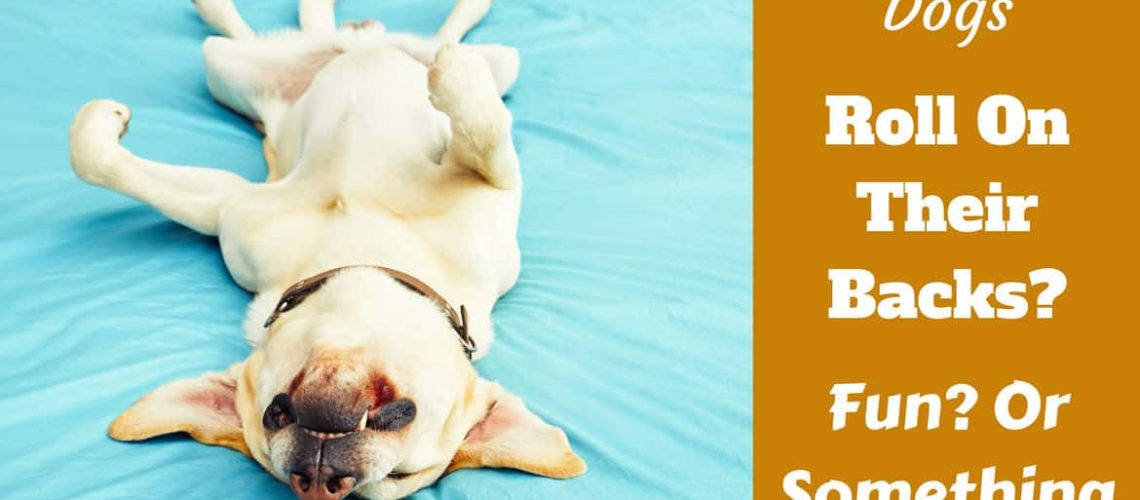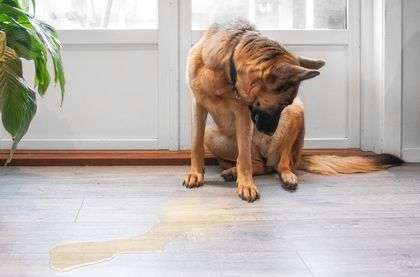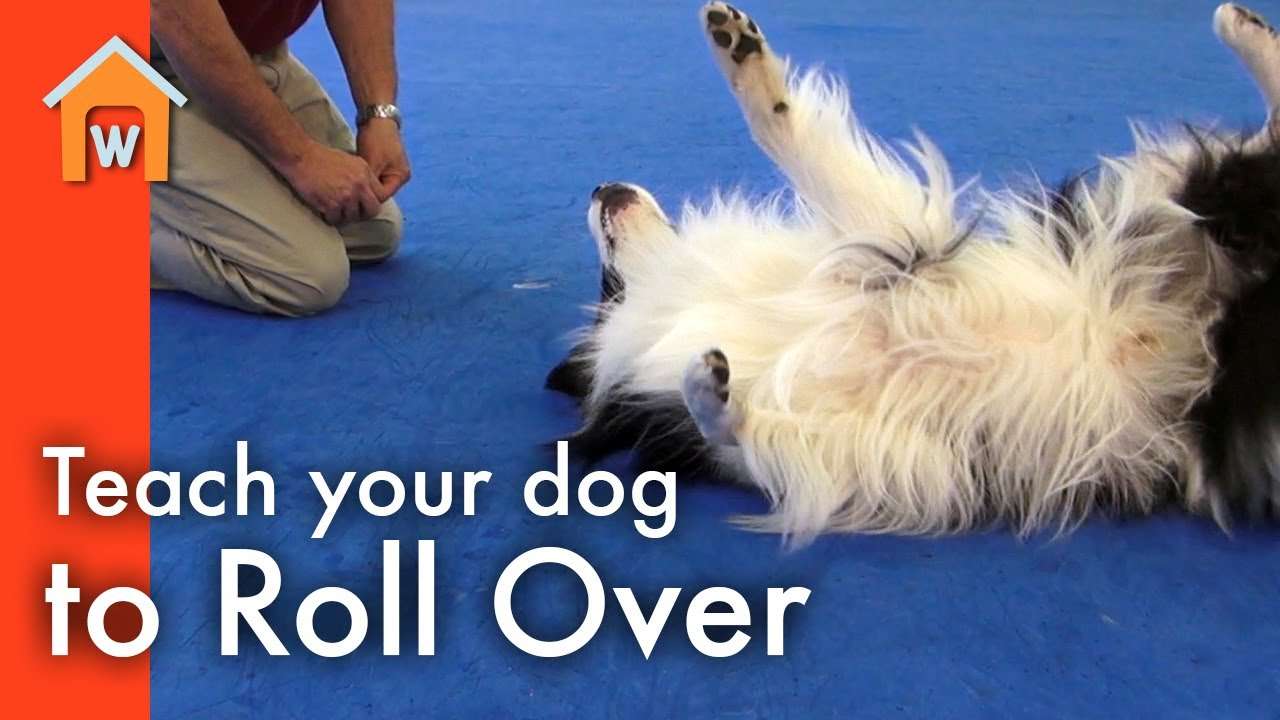Key Takeaways:
- Dogs roll on their backs as a way to show submission and trust towards other dogs or humans.
- Rolling on their backs can also be a sign of playfulness and an invitation for belly rubs.
- Some dogs roll on their backs to scratch an itch or relieve discomfort in certain areas of their body.
- Rolling on their backs can be a defensive tactic used by dogs to protect vulnerable areas like the throat and abdomen during a confrontation.
- In some cases, rolling on their backs can indicate fear or anxiety, as it is a submissive posture that dogs adopt when feeling threatened.
Have you ever wondered why dogs roll on their backs? It may seem like a simple and silly behavior, but understanding the reasons behind it can provide valuable insights into our furry friends' minds. Exploring this topic allows us to delve into the fascinating world of canine behavior and uncover the hidden meanings behind their actions. By unraveling this mystery, we can strengthen our bond with our four-legged companions and enhance our ability to communicate with them effectively. So, let's embark on this journey together and discover the captivating reasons why dogs roll on their backs!
Why do dogs roll on their backs?
Reasons why dogs roll on their backs
Dogs have a unique way of communicating with us, and one of the ways they do this is by rolling on their backs. There are several reasons why dogs engage in this behavior:
- Stretching: Rolling on their backs allows dogs to stretch out their muscles and relieve any tension or stiffness they may be feeling.
- Scratching: Dogs may roll on their backs as a way to scratch hard-to-reach places, such as their belly or back. This helps them alleviate any itching or discomfort they may be experiencing.
- Submission: Rolling on their backs can also be a sign of submission or submissiveness. By exposing their vulnerable underside, dogs are showing that they pose no threat and are not a challenge to other dogs or humans.
Do dogs roll on their backs to communicate?
Yes, rolling on their backs is a form of communication for dogs. It can convey different messages depending on the context:
- Pleasure and trust: If a dog rolls on its back when you approach or pet them, it is usually a sign that they feel comfortable and trust you. They may also enjoy the attention and seek more belly rubs!
- Fear or anxiety: On the other hand, if a dog rolls onto its back when confronted by another dog or person, it could indicate fear or anxiety. In this case, the dog is trying to appease the perceived threat by showing submission.
How rolling on their backs helps dogs cool down in hot weather
Dogs don't have sweat glands like humans do, so they rely on other methods to cool down. Rolling on their backs is one of these methods:
When a dog rolls onto its back, it exposes the less furry and cooler areas of its body to the air. This helps dissipate heat and regulate body temperature.
In addition, dogs have a lot of blood vessels near their skin's surface on their belly. By exposing this area to the air when rolling on their backs, the blood can cool down more efficiently before circulating through the rest of the body.
The benefits of dogs rolling on their backs during playtime
Dogs often roll on their backs during playtime, and there are several reasons why they do this:
- Invitation to play: Rolling onto their backs can be an invitation for other dogs or humans to engage in play. It signals that they are ready for fun and games!
- Self-defense tactic: Rolling onto their backs can also be a defensive move during play. By exposing their teeth and claws while playing with another dog, they can establish boundaries and communicate that they want the game to remain friendly.
- Submission during rough play: If play becomes too rough or intense, a dog may roll onto its back as a way of signaling submission and ending the rough behavior.
Is rolling on their backs a sign of submission or vulnerability in dogs?
Yes, rolling on their backs is often associated with submission or vulnerability in dogs:
When a dog rolls onto its back and exposes its belly, throat, and vital organs, it is showing that it poses no threat and is submitting to another dog or person.
This behavior stems from dogs' ancestral pack mentality where lower-ranking members would show submission to higher-ranking members to maintain harmony within the pack.
Understanding a dog's mood by observing them roll on their backs
Observing a dog rolling onto its back can provide insights into its current mood:
- Relaxed and content: If a dog is lying on its back with loose muscles and a relaxed expression, it is likely feeling calm and content.
- Anxious or fearful: On the other hand, if a dog rolls onto its back with tense muscles and a worried expression, it may be feeling anxious or fearful.
- Playful and excited: During playtime, if a dog rolls onto its back while wagging its tail and barking joyfully, it is likely feeling playful and excited.
It's important to consider the overall body language of the dog along with the context to accurately interpret their mood.
Reasons why dogs roll on their backs
Dogs rolling on their backs can serve various purposes and communicate different messages. One reason dogs roll on their backs is to scratch an itch. By exposing their belly, they can easily reach those hard-to-reach spots and alleviate any discomfort. Additionally, rolling on their backs can be a way for dogs to stretch their muscles and relieve tension.
Another reason dogs roll on their backs is to show submission or trust. When a dog exposes its vulnerable belly, it signals to other dogs or humans that they are not a threat and are willing to submit. This behavior is often seen during social interactions or when meeting new people or animals.
Furthermore, rolling on their backs can also be a sign of playfulness and an invitation for interaction. Dogs may initiate playtime by lying on their back, wagging their tail, and inviting others to join in the fun. It's important to understand the context and body language of the dog to determine the exact reason behind their behavior.
Do dogs roll on their backs to communicate?
Yes, dogs do roll on their backs as a form of communication. Rolling onto their back is a way for dogs to convey various messages depending on the situation. For example, if a dog rolls onto its back during playtime, it is often an invitation for other dogs or humans to engage in playful interaction.
In some cases, rolling onto the back can also indicate submission or surrender. When faced with a dominant individual or in unfamiliar situations, a dog may choose to expose its vulnerable belly as a way of showing deference and avoiding conflict.
It's important to note that not all instances of rolling onto the back are communicative gestures. Sometimes, dogs simply roll onto their backs out of comfort or relaxation without intending any specific message. Understanding a dog's body language as a whole is crucial in interpreting whether rolling onto the back is a form of communication or not.
How rolling on their backs helps dogs cool down in hot weather
Rolling on their backs can be a natural way for dogs to cool down in hot weather. When a dog lies on its back, it exposes its belly and other areas with less fur, allowing for better heat dissipation. The cooler ground or air can come into direct contact with these areas, helping to regulate the dog's body temperature.
Additionally, rolling onto their backs can help dogs find shade or cooler surfaces. By exposing their belly to the ground or a shaded area, they can take advantage of any available coolness. This behavior is particularly common in breeds with thicker coats or during periods of intense heat.
It's important to ensure that dogs have access to shade, fresh water, and appropriate cooling methods during hot weather. Rolling onto their backs alone may not be sufficient to prevent overheating, and owners should take proactive measures to keep their furry friends safe and comfortable in high temperatures.
The benefits of dogs rolling on their backs during playtime
1. Physical relaxation and stretching
When a dog rolls on its back during playtime, it is not only having fun but also benefiting physically. Rolling on their backs allows dogs to stretch their muscles, promoting flexibility and preventing stiffness. It helps them release tension and relax their bodies after engaging in energetic activities. This behavior is similar to humans doing yoga or stretching exercises to relieve muscle tightness.
2. Social bonding and trust-building
Rolling on their backs can also be a way for dogs to establish social bonds and build trust with other dogs or humans. By exposing their vulnerable belly, they are showing that they feel safe and comfortable in the presence of others. It is a submissive gesture that communicates non-aggression and a willingness to cooperate. When dogs engage in this behavior during playtime, it can strengthen the bond between them and their playmates, leading to more harmonious interactions.
3. Communication of playfulness
Dogs often roll on their backs as a way to communicate their playful intentions during playtime. It serves as an invitation for other dogs or humans to engage in friendly interaction. By exposing their belly, they are signaling that they want to continue playing or initiate a game of chase or wrestling. This behavior can enhance the enjoyment of playtime for both the dog and its playmates, fostering positive social experiences.
Is rolling on their backs a sign of submission or vulnerability in dogs?
Rolling on their backs can indeed be seen as a sign of submission in dogs.
Submission:
When a dog rolls onto its back voluntarily, it is displaying submissive behavior towards another individual, whether it's another dog or a human. By exposing their vulnerable belly, they are communicating that they pose no threat and are willing to submit to the dominant individual's authority. This behavior is rooted in the natural pack hierarchy of dogs, where submission is crucial for maintaining social order and avoiding conflicts.
Vulnerability:
Rolling on their backs also exposes a dog's vulnerable areas, such as the belly and throat, making them susceptible to potential attacks. However, this behavior does not necessarily indicate fear or true vulnerability. Dogs have evolved to trust their social partners and understand that rolling on their backs during playtime is a safe and enjoyable activity. It is a way for them to communicate playfulness rather than genuine vulnerability.
Understanding a dog's mood by observing them roll on their backs
Observing a dog rolling on its back can provide valuable insights into its current mood.
1. Happiness and contentment
When a dog rolls on its back with relaxed body language, wagging tail, and an open mouth displaying a "smile," it is likely feeling happy and content. This behavior often accompanies playful interactions or when the dog is receiving affection from its owner or other trusted individuals. It indicates that the dog feels safe, comfortable, and enjoys the current situation.
2. Submissive or fearful emotions
If a dog rolls onto its back with tense body posture, tucked tail, ears pinned back, or showing signs of anxiety like panting excessively or avoiding eye contact, it may be displaying submissive or fearful emotions. In these cases, rolling on their backs can be an appeasement gesture aimed at diffusing potential conflicts or expressing discomfort in certain situations.
3. Attention-seeking behavior
Sometimes dogs may roll on their backs as a way to seek attention from their owners or other individuals. They may do this when they want to be petted, receive belly rubs, or simply crave human interaction. By exposing their belly, they are signaling their desire for physical contact and affection.
Overall, observing a dog's behavior while rolling on its back can provide valuable clues about its emotional state and help us better understand and respond to their needs.
In conclusion, dogs roll on their backs for various reasons. It could be a way to show submission, invite playfulness, or even scratch an itch. Understanding why dogs do this helps us better communicate and bond with our furry friends.
Are dogs happy when they roll on their backs?
When a dog exposes its belly, it is often a sign of submission and trust towards its owner. This behavior can be interpreted as a request for belly rubs. However, it is important to note that not all dogs display this behavior solely to seek affection.
Why do dogs roll on their backs when they see you?
Dogs may also roll onto their backs to indicate that they are friendly and not a threat. When they are excited to see you, they may use this posture as a way of greeting. This behavior is often accompanied by a relaxed, wiggly body and an open mouth.
Why do dogs roll on their backs on carpet?
Dogs may scratch or mark with scent for two reasons: to alleviate an itch or to create a familiar scent that makes their environment feel like home, which is associated with their own smell.
Do dogs have a favorite person?
Similar to humans, dogs form strong attachments to certain individuals over time, primarily based on positive experiences and associations with that person. While treats and rewards can be used to build a strong bond with pets, the most effective way to develop a healthy relationship with your dog is through play.
Why does my dog sleep against me?
If your dog enjoys sleeping with you, it indicates that they trust and feel at ease with you. When your dog was a puppy, they would snuggle with their siblings for warmth and comfort, so now they seek the same closeness with their human companions.
Why does my dog lick me so much?
Dogs may lick their owners for various reasons such as expressing love, seeking attention, self-soothing when stressed, showing empathy, or simply because they enjoy the taste. However, if a dog licks excessively, it could be an indication of anxiety, discomfort, or pain.

















